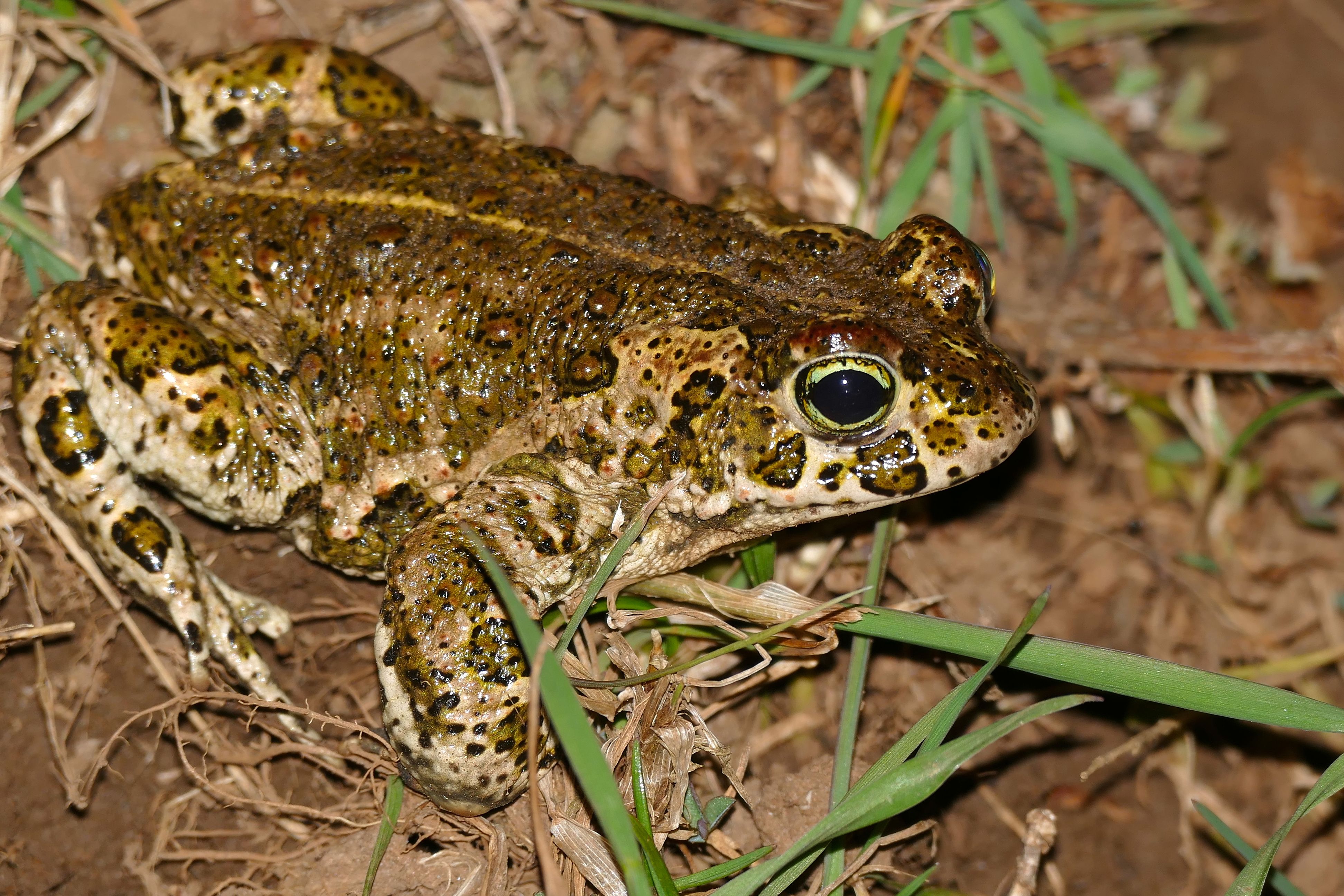Its widely audible calls and the fact that it always carries its "cross" on its back make the Natterjack toad unmistakable.
Description
Depending on their age, the males reach a body size of four to six centimetres, the females five to seven centimetres. The back is marbled brown or olive-coloured on a lighter background. The skin surface is dry and warty. A thin yellow longitudinal line usually runs across their back.
Habitat
Like the Green toad, the natterjack toad is a pioneer species of warm, open habitats in areas with loose and sandy soils. The presence of biotopes with little to no vegetation and sufficient hiding places as terrestrial habitats as well as barely overgrown shallow and small bodies of water as spawning grounds is a prerequisite for the existence of the Natterjack toad.
Breeding call
During the spawning season, the males of the Natterjack toad produce a series of calls with the help of a blue-coloured vocal sac at the throat, which can be described as a loud metallic rattle ("aerr..aerr..aerr"). Similar to the Green toad, calling activity usually begins after sunset. The main calling period is in April and May.
Example breeding call:
Wikimedia Commons Licence Odé Baudewijn CC BY-SA 4.0 international.
Source: The description and distribution text is an excerpt from Wikipedia (https://de.wikipedia.org/wiki/Kreuzkröte). The text is available there under the licence "Creative Commons Attribution/Share Alike". Status: 10 July 2023. The text on the call consists of excerpts from Wikipedia, adapted from "Die Amphibien Europas: Bestimmung, Gefährdung, Schutz" by Nöllert & Nöllert, Franckh-Kosmos Verlag 1992.

 DE
DE  EN
EN 









